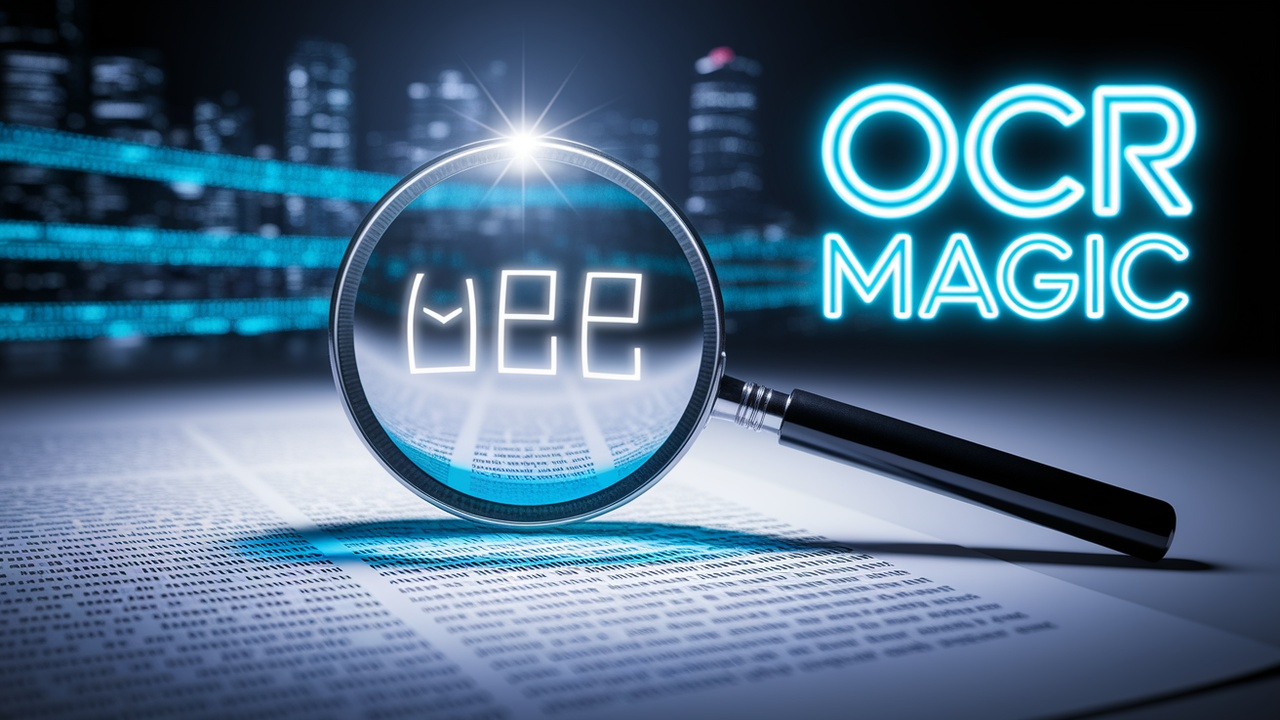
This comprehensive course on Optical Character Recognition (OCR) provides learners with a deep understanding of how OCR technology works, its applications, and how to implement OCR systems. The course is structured progressively, enabling participants to build their skills from foundational knowledge to advanced implementations in real-world scenarios.
Course Levels
-
Level 1: Introduction to OCR
In this foundational level, learners will explore the basic concepts of OCR, its history, and its significance in the digital world.
-
Level 2: Understanding Image Processing
This level covers the essential image processing techniques that are crucial for effective OCR. Learners will understand how images are prepared for character recognition.
-
Level 3: Character Recognition Techniques
At this stage, students will dive into the core techniques of character recognition, exploring both traditional and modern methods.
-
Level 4: Advanced OCR Systems
This level examines advanced OCR systems, including frameworks and libraries that facilitate the development of OCR applications.
-
Level 5: Practical Applications of OCR
Learners will explore real-world applications of OCR, including case studies and projects that demonstrate the technology in action.
-
Level 6: Building Your Own OCR Application
In this capstone level, participants will apply their knowledge to design and implement a simple OCR application using popular tools and programming languages.
Course Topics
-
Tesseract OCR
# Tesseract OCR Tesseract OCR is an open-source Optical Character Recognition (OCR) engine that is widely used for converting images of text into machine-encoded text. Originally developed by Hewlett...
-
Handwritten Text Recognition
# Handwritten Text Recognition Handwritten Text Recognition (HTR) is a specialized area of Optical Character Recognition (OCR) that focuses on converting handwritten text into machine-readable format...
-
Noise Reduction Methods
# Noise Reduction Methods Noise reduction is an essential aspect of image processing, especially in Optical Character Recognition (OCR). Noisy images can significantly hinder the accuracy of OCR syst...
-
Image Acquisition
# Image Acquisition Image acquisition is the process of capturing images for further analysis, manipulation, or interpretation, which is a fundamental step in Optical Character Recognition (OCR). Thi...
-
User Interface Design for OCR Apps
# User Interface Design for OCR Apps ## Introduction In the development of Optical Character Recognition (OCR) applications, a well-designed user interface (UI) is crucial for enhancing user experien...
-
Building the OCR Pipeline
# Building the OCR Pipeline Optical Character Recognition (OCR) is a technology that converts different types of documents, such as scanned paper documents, PDFs, or images taken by a digital camera,...
-
OCR in Cloud Platforms
# OCR in Cloud Platforms ## Introduction Optical Character Recognition (OCR) technology has evolved significantly with the rise of cloud computing. Cloud platforms provide scalable resources, powerfu...
-
Image Preprocessing Techniques
# Image Preprocessing Techniques Image preprocessing is a crucial step in Optical Character Recognition (OCR) systems. It enhances the quality of the images before they are fed into OCR algorithms, e...
-
Performance Evaluation of OCR Systems
# Performance Evaluation of OCR Systems Optical Character Recognition (OCR) systems are essential tools for converting different types of documents, such as scanned paper documents, PDF files, or ima...
-
Neural Networks for OCR
# Neural Networks for OCR Optical Character Recognition (OCR) is a technology that converts different types of documents, such as scanned paper documents, PDFs, or images captured by a digital camera...
-
Feature Extraction
# Feature Extraction Feature extraction is a crucial step in the Optical Character Recognition (OCR) process, especially in the context of character recognition techniques. It involves transforming r...
-
OCR in Mobile Applications
# OCR in Mobile Applications Optical Character Recognition (OCR) has become increasingly important in mobile applications, allowing users to convert different types of documents, such as images or PD...
-
OpenCV for Image Processing
# OpenCV for Image Processing OpenCV (Open Source Computer Vision Library) is a powerful tool that provides a comprehensive suite of functions for image processing and computer vision. In this sectio...
-
OCR in Document Management
# OCR in Document Management Optical Character Recognition (OCR) plays a pivotal role in modern document management systems (DMS), allowing organizations to digitize, store, and manage their document...
-
Setting up the Development Environment
# Setting up the Development Environment Creating an OCR application requires a well-structured development environment. This ensures that all dependencies and tools are correctly configured, allowin...
-
Thresholding and Binarization
# Thresholding and Binarization ## Introduction Thresholding and binarization are fundamental techniques in image processing, especially in the context of Optical Character Recognition (OCR). These t...
-
Morphological Operations
# Morphological Operations Morphological operations are a set of non-linear image processing operations that process images based on their shapes. They are primarily applied to binary images but can ...
-
What is OCR?
# What is OCR? Optical Character Recognition (OCR) is a technology that enables the conversion of different types of documents, such as scanned paper documents, PDFs, or images captured by a digital ...
-
Basic OCR Workflow
# Basic OCR Workflow Optical Character Recognition (OCR) is a technology that converts different types of documents, such as scanned paper documents, PDFs, or images captured by a digital camera, int...
-
Deep Learning Approaches
# Deep Learning Approaches in Optical Character Recognition (OCR) Optical Character Recognition (OCR) is the technology that converts different types of documents, such as scanned paper documents, PD...
- And 10 more topics...